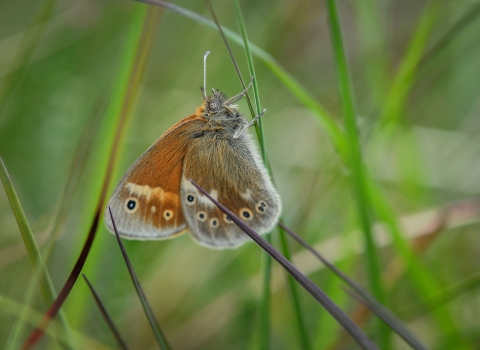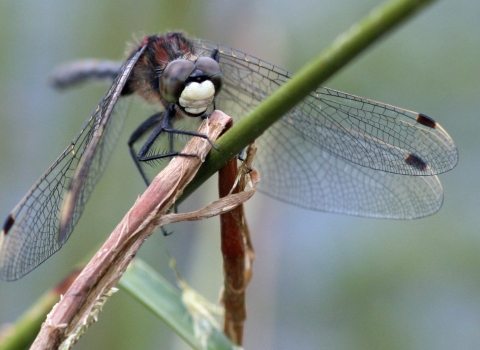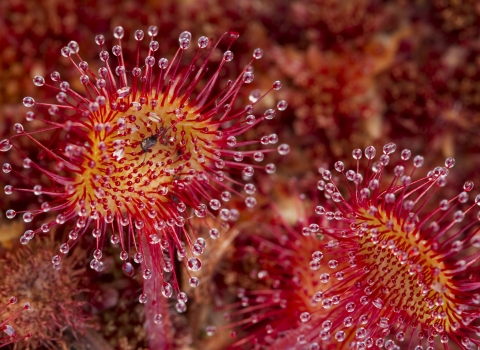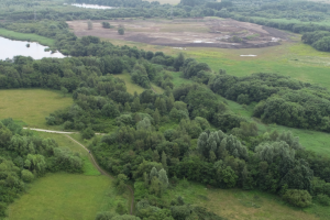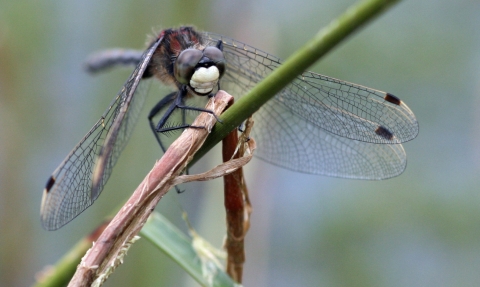
Male white-faced darter dragonfly - Vicky Nall
Great Manchester Wetlands Species Reintroduction Project
Providing new homes for species that have been lost to wetland habitat destruction, and restoring lost biodiversity
By working together with passionate partners, we're recreating lost or damaged wetland habitats so they can once again support the reintroduction of lost species. Many of our wetland areas were historically drained, degraded or otherwise destroyed, meaning that the specialised plants and animals that lived on them became locally extinct.
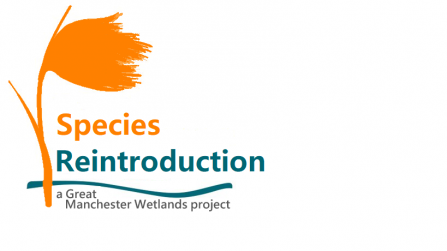
Guided by the Reintroductions and Other Conservation Translocations: Code and Guidance for England and the IUCN Reintroduction Protocol , and involving wider partners on this project, we are working to reintroduce a number of plant and animal species, many of which have not been seen for over 100 years.
Which species are we bringing back?
The Great Manchester Wetlands Species Reintroduction Project currently focuses on the four key species below.
Locally known as the Manchester argus, the large heath butterfly was last seen in the Great Manchester Wetlands over 150 years ago. Being specially adapted to living on peatlands, the large heath died out in the area when these habitats were drained and the peat exploited starting from the time of the Industrial Revolution.
A rearing programme at Chester Zoo, saw the reintroduction of the large heath butterfly to the Manchester Mosslands. Summer 2019 saw a small number of pregnant females collected from a surviving population on Winmarleigh Moss near Garstang and transported to Chester Zoo where they laid their eggs. The dedicated zoo staff cared for the caterpillars whilst they hatched, grew and then pupated. The pupae were then transported to their release site. Since then, subsequent reinforcements have led to the establishment of a permanent population which continues to be monitored by GM Wetlands partners.
Bring a species back from extinction (https://youtu.be/BXu_eLzphFY)
Bringing a species back from extinction: the return of the Manchester argus butterfly
Historic burning of their peatland habitats has caused the bog bush cricket to become locally extinct in many of its traditional wetland homes. It is a short winged (brachypterous) species and so cannot fly, meaning that it is unlikely to return to colonise new areas independently. The GM Wetlands team have been working to restore habitats suited to the bog bush cricket, including the wet ground with purple moor grass in which it lays its eggs, and monitoring at sites where it continues to have a presence, in readiness for possible future translocations.
The white-faced darter is one of the UK’s rarest dragonflies and is only found at a handful of locations, including at recent reintroduction sites at Delamere Forest in Cheshire and Foulshaw Moss in Cumbria. A lover of lowland peatbogs, white-faced darters require specialised habitats to survive. The specific water quality and submerged sphagnum moss of bog pools allows the nymphs to hide and grow in safety, and common cotton grass and soft rush provide the ideal ladder for them to emerge. Currently the GM Wetlands partners are working to assess and improve potential release sites, with invaluable support from the Mace Group, and to prepare for a future reintroduction.
We are working to reintroduce classic peatland species such as common and hare’s tail cotton grass, cross-leaved heath and sphagnum mosses. And with hundreds of thousands of specimens planted to date and more planned across our sites, significant changes can already be seen. We have also worked closely with the Northwest Rare Plants Initiative on this project to reintroduce a number of rare plant species, such as the carnivorous great sundew, oblong-leaved sundew, lesser bladderwort, and other rare wetlands specialists including white-beaked sedge and bog asphodel, many of which were completely absent.
Our partners
Many of our partners are listed below, but others may become involved as and when appropriate.
Butterfly Conservation | Cheshire Wildlife Trust | Chester Zoo | Lancashire Wildlife Trust | The University of Liverpool | Liverpool John Moores University | Manchester Metropolitan University | Natural England | North West Rare Plants Initiative | Salford Council | Warrington Borough Council | Wigan Council | The Woodland Trust |
The project has received previous funding from Veolia Environmental Trust and Casey Group Ltd (secured and administered by Lancashire Wildlife Trust), plus additional funding input from Salford CC, Warrington BC, Wigan Council and Bolton Metropolitan Borough Council. It has also received considerable input from partners and other organisations in terms of resources, and employee and volunteer time and expertise.

